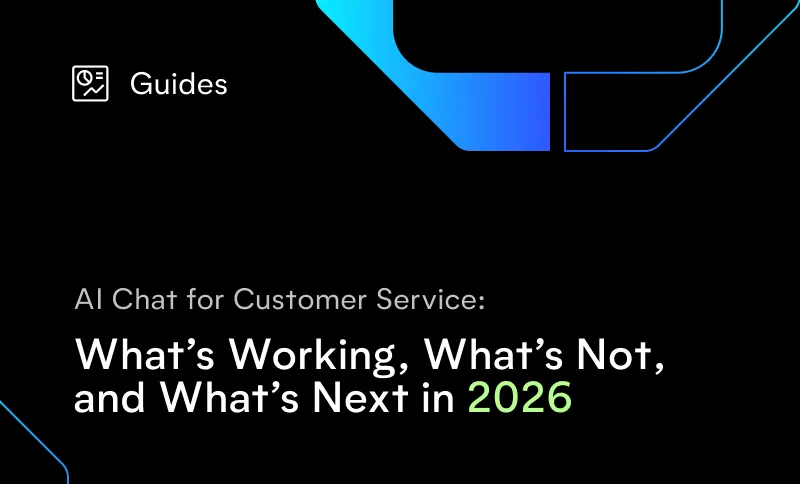
Over the last several years, the customer service industry has experienced monumental change. From the rise of chatbots to the ubiquitous use of social media, consumers demand more from companies when answering questions or solving problems. With the rise of Siri, Alexa, and Google Assistant, consumers have more opportunities to get their questions answered, where and when they want.
But what about complex customer service issues? If a consumer needs information on purchasing a car or refinancing a home, can Siri, Twitter or a chatbot help? More than 60 percent of U.S. consumers prefer to use digital platforms to get their questions answered. However, when consumers have complex issues or purchasing decisions, they want personal interaction with a human. Twenty-three percent of consumers prefer to have face-to-face interaction where 40 percent reach out over the phone.
To provide effective customer service, businesses need to blend cutting-edge technology with the human touch. With 265 billion customer service requests made annually, companies should strive to connect with consumers on varying levels.
Complex Issues & Purchasing Decisions
Chatbots, websites, and apps can handle many customer requests. Need to order a pizza? Need to make a cable bill payment? Need to arrange a ride to the airport? Easy enough. But what about higher-value purchases, such as buying a car, exploring mortgages, or understanding health insurance options? Although consumers can find answers to preliminary questions through digital platforms, when it comes down to making a purchasing decision, it’s more useful to talk to a human representative.
In these circumstances, most consumers reach out to a human as opposed to searching online. Fifty-nine percent of people do so because they want a quick answer to a complex issue. Fifty-seven percent of people want to talk to a human.
By 2020, calls to businesses will exceed 169 billion annually. Further, these phone calls are ten to fifteen times more likely to generate revenue than digital submissions. Companies need to capitalize on human efforts and not merely focus on non-human technological options.
Beyond the Phone: Chat and Messaging
Human interaction with consumers can occur beyond the phone. Because consumers can now be reached on various platforms, businesses should incorporate other ways to access human customer service agents. Chat and messaging are two effective ways to engage humans in your customer service efforts.
When consumers ask questions through chat or messaging, it’s in real-time, just like the phone. However, chat and messaging add more flexibility. For example, with messaging, a consumer can communicate with a human agent on his or her own time. A customer can send a message request with a question in the afternoon, and the agent can respond later in the evening after researching the customer’s issue. This provides for additional opportunities for human communication through technology, allowing consumers to resolve problems on their time table, providing high convenience.
Combination of AI & Human Agents
Human agents don’t need to be on the frontline for every consumer issue. For many simple questions or tasks, technological platforms can handle these issues effectively and sufficiently. Virtual assistants or chatbots can serve as the initial contact for most customer issues. The chatbot can, for example, escalate more complex concerns or questions to a human agent. This allows human customer service agents to maximize their time with customers while delegating more routine tasks to chatbots.
By implementing chatbots and virtual agents, companies can reduce their customer service spending by 30 percent. This is significant since, in total, businesses spend approximately $1.3 trillion annually servicing customer service issues. Virtual agents can also resolve initial issues faster with increased response times, 24 hours a day, 365 days per year. By combining virtual agents with human interaction, companies can improve productivity and efficiency while servicing their customers.
Tracking Interactions
It’s easy to track clicks on a website, but what about monitoring conversations with human agents? Businesses need to incorporate tracking for all consumer conversations, whether through chat, on the phone, or in person.
To meet consumer demands, businesses need to understand and anticipate consumers’ needs and provide personalized service. Seventy-six percent of consumers now demand that companies understand their expectations and needs. Seventy percent of people say that if a business understands how they use services and products, the company can win their business. Fifty-nine percent of people say that if a company personalizes their experience based on past purchases, the company can earn their business.
To understand consumers fully, businesses must track every level of interaction, digital and human. Failing to do so could lead to leaving money on the table by failing to make a sale or having your customers go elsewhere.
Human connection and conversation remain the primary method of communication when making emotional or complex decisions. Ninety percent of companies claim that they compete based on the customer service provided. Failing to integrate humans into the customer service platform can be detrimental to business growth. More than 50 percent of consumers have backed out of a purchase when receiving poor customer service. Thirty-three percent consider changing companies all together.
On the other hand, seventy per cent of consumers say they'll spend more money with a company when that company delivers exceptional customer service. By blending technology, such as chatbots and artificial intelligence, with human customer service agents for more complex decision making, companies can well position themselves for current and future competition.



.svg)


